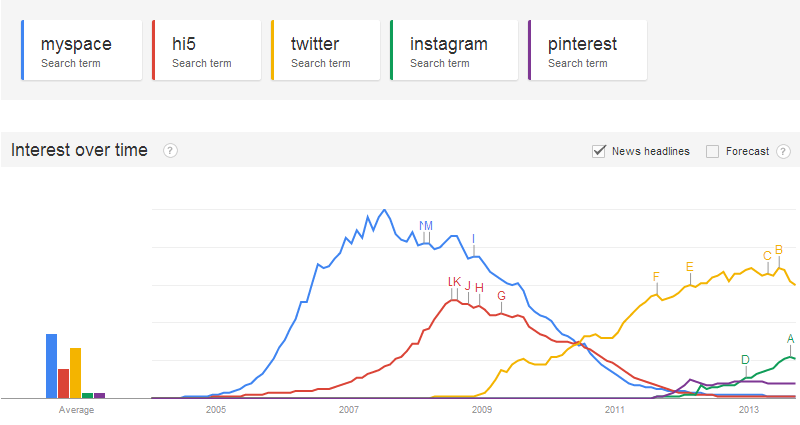Lots of companies have big user bases and big accumulations of user data. And they think that this gives them a lock-in. But maybe the only stickiness comes from the mere presence of users - more like a nightclub than a bank. If your friends move, you'll move in a second, and the dynamics of smartphones mean there are no barriers at all to moving. Owning the address book, and perhaps the photos, are the only real levers of control, and it's very hard to dislodge the underlying platform owners from that. Benedict Evans
Like physical products, social networks seem to follow a classic product lifecycle curve, going through four basic stages, from introduction through growth and maturity to the inevitable decline. Beside basic market dynamics, there seems to be a degree of user fatigue associated with it: as you build up bigger and bigger networks they become increasingly irrelevant, filled with old acquaintances you don’t connect to in real life anymore. It’s a problem no social networks has managed to solve properly – maybe with the exception of Twitter, where you follow people more according to shared interests than to real-life encounters.

It’s interesting to see how well the current top players will be able to break this model and continue growing or at least maintain a lead over the competition. Comparing the same Google search trends, it looks like both Twitter and Facebook are leveling off, reaching maturity and possibly the beginning of a slow decline. Also, Twitter barely reached MySpace-interest levels…

Post a Comment